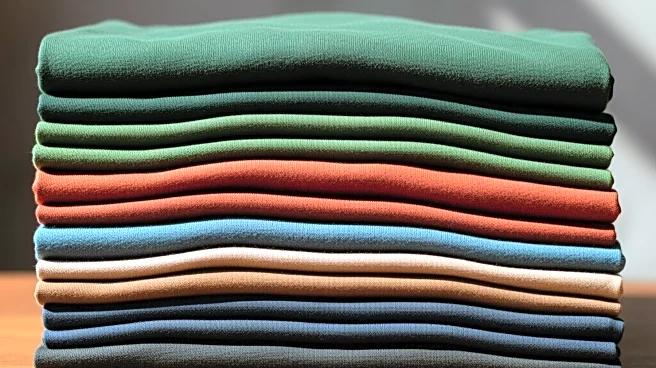What's Happening?
Comfort Colors, a brand owned by Gildan, has seen significant growth in popularity, particularly among Gen Z consumers. The brand's shirts, made from 100% U.S. cotton, utilize a dyeing process that requires
less energy and water, contributing to their 'signature faded look.' This sustainable approach has resonated with consumers, leading to a 40% year-over-year growth in 2024, which in turn drove a 6% sales increase in Gildan's broader activewear category. Comfort Colors has become a staple in college bookstores, resorts, and souvenir shops, and is expanding into new product categories such as hats, bags, and women-specific clothing.
Why It's Important?
The rise of Comfort Colors highlights a shift in consumer preferences towards sustainable and locally sourced products. This trend is particularly strong among Gen Z, who value comfort, vintage flair, and environmental consciousness. The brand's success has contributed to Gildan's stock performance, which has outpaced the S&P 500 over the past five years. As Comfort Colors expands its product offerings, it could further solidify its position in the market, potentially influencing other brands to adopt similar sustainable practices. This growth also underscores the importance of catering to the evolving demands of younger consumers who prioritize ethical consumption.
What's Next?
Comfort Colors plans to expand into additional product categories in 2026, coinciding with its 50th anniversary. This expansion could further boost Gildan's activewear sales and strengthen its market position. As the brand continues to grow, it may attract more partnerships with social groups, musical acts, and other brands seeking to capitalize on its popularity. Gildan's upcoming earnings report may provide further insights into the financial impact of Comfort Colors' success and its strategic plans for future growth.
Beyond the Headlines
The success of Comfort Colors may influence broader industry trends, encouraging more apparel companies to adopt sustainable practices and focus on local sourcing. This could lead to increased competition in the sustainable fashion market, driving innovation and potentially lowering costs for consumers. Additionally, the brand's popularity among Gen Z could prompt other industries to reevaluate their strategies to better align with the values of younger consumers, emphasizing sustainability and ethical production.











